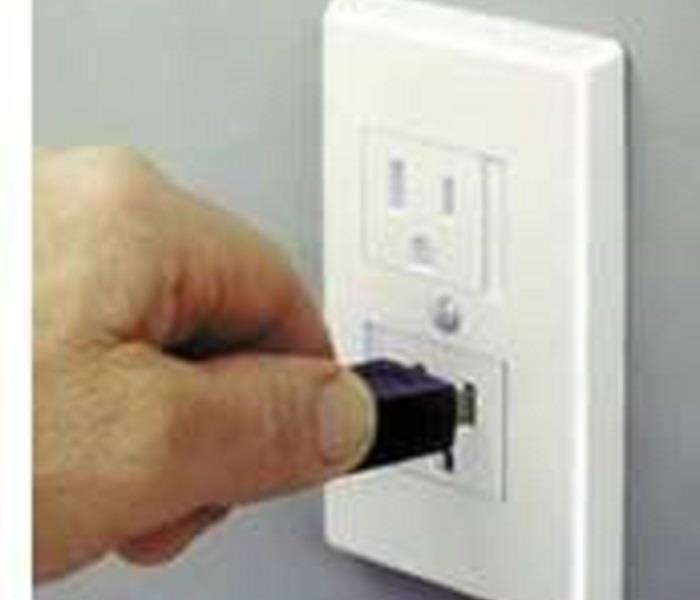Safely Using Cords and Electric Outlets
1/25/2017 (Permalink)
Electric plug and cord safety
- Only use certified extension cords listed by a recognized certification organization such as Underwriters Laboratories ("UL listed").
- Don't drape electrical cords or wires over radiators, pipes or other metal objects.
- Don't overload wires. Electrical wires are designed to carry only a certain amount of power. Overloading causes wiring to overheat and creates a fire hazard. Make sure the cord is large enough to carry the electricity necessary to operate the tool or appliance.
- Never cut off the third prong. Three-pronged plugs ensure proper grounding for appliances and power tools.
- Replace older cords that have non-polarized receptacles and don't have safety closures. These cords expose young children to shock hazards as well as mouth and burn injuries.
- Use proper extension cords outside. They should be specifically marked for outdoor use. Improper use could result in a fire or shock hazard.
- Check the wattage rating on cords to avoid a potential for a cord overload. Then, add up the wattage ratings of all the products that will be operating at the same time on the cord. If the wattage rating on the cord is lower than the wattage rating of the products, eliminate one load, and check to see if the cord can handle the remaining products. For cords that don't have a wattage rating, multiply the number of amps by 125.
- Don't run extension cords under rugs or carpeting.
- Replace frayed cords.
- Pull the plug, not the cord, to disconnect an appliance.
- Don't overload circuits with too many plugs.
- Install socket guards in all outlets not in use. This helps avoid injury to small children.





 24/7 Emergency Service
24/7 Emergency Service